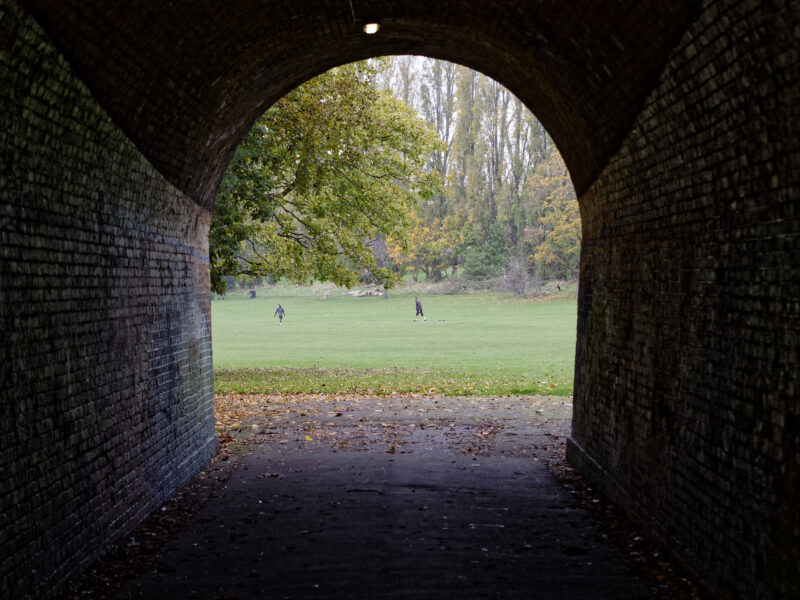As previously mentioned I gave up on my Sony RX100 VII and sold it on. And that left a bit of a gap for a new ‘medium cam’, something more capable than the pocket-size Canon G9X II but smaller than the Panasonic S5 II. I decided to fill that hole with the Olympus OM-Systems OM-5.
A little history
I started with Micro Four Thirds way back with the Olympus PL3 and went through quite a few cameras, ending up with a Panasonic G9 for photo and GH5 II for video. A couple of years ago, I upgraded to L-mount, led by a S5 II, and sold out of MFT.
Why the OM-5
The other cameras I looked at were Sony and Fujifilm APS-C cameras, and in many ways these would have been better. But most of the ‘better’ referred to things important if this was going to be my main system and since this was to compliment full-frame the priorities were a bit different.
The OM-5 won on a few grounds. Firstly, OM take environment-proofing seriously. When I started thinking about it I remembered there were times I left my good camera at home, not because it was heavy, but because I was worried of the environment it would be in. The Fuji/Sony alternative might take better photos, but if it’s at home because I’m scared to risk it, that doesn’t actually do me any good.
Secondly, the lens/price options on OM made more sense. Once you add a half-decent standard zoom the OM-5 came out £400 cheaper (thanks to the wonders of grey imports) which let me stretch the budget to some extra glass.
Lenses
Currently working with:
OM 12-45/4 – Basic standard zoom. It seems perfectly fine. Oddly, although the standard zoom was my main buying priority it’s ended up not being used much so far, as I’ve gravitated towards the 17/1.8 for portability, DOF or light gathering reasons.
OM 40-150/4 – Travel telephoto. Sharper at 300mm equivalent than then RX100 VII was at 200mm equivalent, which is a victory in itself. Note that the Panasonic 35-100/2.8 is almost exactly the same size, trading some range for a stop of light.
Olympus 17/1.8 – Small, light, fairly cheap. Useful as a walking around lens to act as a poor man’s X100. It is on the soft side, and stopped down to F4 it’s beaten by the 12-45/4 wide open, which is a bit embarrassing. Really you use this for the aperture, either for low-light or as a close portrait lens for indoors where it’s long enough to avoid unflattering distortions and can give a slightly soft background.
Olympus 45/1.8 – Bought second hand for loose change (relatively speaking). Really just a low-stakes gig photography lens. I don’t photograph gigs much these days and I have the S5 II for if I do care, but this along with the 17/1.8 will give me something with less carrying commitment.

Sensor
Sensor performance wasn’t a huge surprise since I previously owned a G9 which was another modern 20MP sensor. Roughly speaking, this means you’re good up ISO1600 and then quality really starts to drop as you reach ISO6400 which you should treat as a limit.
In practice I’ve been bumping up to that limit quite often either for indoors photography (even with the F1.8) but also outdoors trying to keep decent action-appropriate shutter speeds with the relatively slow telephoto. So good enough, but only just.
I played with the handheld high-res mode but didn’t find it very useful given it’s limitations and the quality of my lenses.
Autofocus
The AF is mostly fine but with issues. The big one that caught me out was that continuous auto-focus only works in low-speed burst mode (up to 6fps). In high-speed burst (5fps to 10fps) autofocus is locked on the first exposure. This isn’t shown in the camera UI and I can’t find any mention of it in the manual. On-line reviews of the camera have got this wrong as well. It’s an awful, awful gotcha for users.
Otherwise continuous focus works well, I tend to just use centre point focus for moving subjects and in that regard it’s been fine.
The face detection is a bit hit and miss. I’ve seen it work well, but also completely fail to focus, but still release, with indoor group shots (relatively small faces). It is also prone to false positives with bushes etc. I now normally leave it turned off.

Design & Usability
It’s actually quite a good looking camera in person, particularly with the 17/1.8 lens. Physical ergonomics are OK, although the grip could have been a bit deeper. Hasn’t bothered me much in practice. Control feel is mostly good.
The viewfinder has a pretty cheap panel in terms of resolution and general image quality, but the geometry works for my eye.
The UI is basic but mostly OK aside from AF issue above. There is weird and arbitrary segregation in the video modes, for example the process to swap between the “normal” video modes (natural, vivid etc) and the “serious ones” (flat, log).
Custom modes
The custom mode implementation is really good. On the surface it looks weak; four slots, no names, one dial position. But the crucial part is you can assign a button to enter/leave a mode. Plus, unlike on the S5 II the custom mode can include AF & drive mode settings. It takes roughly one second for the camera to make the mode switch.
I’ve setup two custom modes using this approach, one for action photography and one for portraits. If means that if something happens spontaneously I can get into a ready state to capture super quick regardless of what I was doing before.
Video
I don’t intend to use this as a serious video camera but from quick testing it’s actually pretty good for casual use. Only 8-bit video rather than 10-bit but I shot, and published, 8-bit for years and it most cases it’s fine. Overall picture quality looks alright and the stabilizer is very good.

This charming cam
Before purchase I viewed this as a sensible compromise, a practical gap filler rather that something very exciting. It’s hard to get too excited about a camera that, from a performance perspective, isn’t as good as one I already have.
But I’ve been surprised by how much I’ve enjoyed using it and how willing I’ve been to take it places such as out with friends or family events. When you pull out a full-frame camera you’re instantly Camera Guy. I don’t mind being Camera Guy when photography/videography is explicitly why I’m there but I’m just out socially I don’t want to draw attention that way. The OM-5 is just less conspicuous, less showy. It’s discrete enough not to impose itself on the situation.
The OM telephoto has been useful too, I’ve taken it to a Park Run where I couldn’t take the S5 II just because of the size versus my bike rucksack. And even for photographing the dogs in the local park there’s that “I can’t be arsed” moment of picking up the S5 II and 70-200/4 and then preferring the lighter OM-5 combo. Photography is often a compromise between portability and quality, and how I lean varies day to day. Hopefully, having both options will prevent any feelings of “all my equipment is stupid and wrong” when I’m out-of-sync with the S5 II.
It will be different this time
Back in 2011 using the Olympus PL3 and 45/1.8 lens felt pretty magical, because you got big camera results in a small camera. Well, at least in good lighting you did – that sensor was rough.
I liked it so much I invested more into the system with better cameras and lenses and somewhere along the way the magic was lost. The G9 and Panasonic 42.5/1.2 lens produced good results but didn’t feel special because it was the same size as a full-frame camera with a 85mm. And the full-frame camera would probably outperform it.
For micro four-thirds to make sense for me it has to lean on the compactness aspect and not chase absolute performance. A lot of the MFT lenses that are tempting on merit are as big as their FF equivalents. The Olympus 17/1.2 is a similar size to the L-mount Panasonic 35/1.8, the Olympus 40-150/2.8 is similar to the Panasonic 70-300.
So that really means limiting my options to the ~F1.8 shorter primes and, if needed, a few longer lenses where’s no direct L-mount alternative, e.g. the Sigma 56/1.4, Olympus 75/1.8 and Panasonic 200/2.8.

Good idea / bad idea
Taking the camera by itself it’s pretty good, albeit lacking a degree of polish. The basic UI issues mentioned above and also silly things like one of the scene modes referring to the pop-up flash. The firmware upgrade process is clunky via the app and, for me, impossible with the PC software. It still has micro-USB. A lot of these issues could be improved by firmware, but I doubt they will be.
On the terms of the original goal, be a better travel/medium camera than the RX100 VII, it succeeds. The RX100 VII has clear advantages on burst speed and size. Technically the Sony leads on autofocus as well but as I’m a centre-point guy for action it makes little difference and actually using the fancy AF settings on the Sony was awkward.
Against that, the image quality on this OM setup is much better both in terms of sensor and lens, it’s much more likely to take a picture that’s worth keeping. The usability is vastly better and where I resented using the RX100 VII I quite like the OM-5. And of course, the weather sealing for the outdoors trips.
Compared to previous MFT cameras I think it makes more sense. If I did a head-to-head review against my old G9, considering multiple categories and assigning scores to each, the G9 would win. It is, overall, a better camera. But the OM-5 is a better micro four thirds camera. The G9 was just inappropriately big to the point it made no sense for the format. Just a great implementation of the wrong idea. Conversely, the OM-5 with the smaller lenses feels about right. Much smaller than this and it gets fiddly, much bigger and it’s getting into fights with APS-C.
I think the biggest success of the OM-5 is that it still feels like a proper camera but the compactness gives a lower mental hurdle to use it. So far, I’m glad I got it.